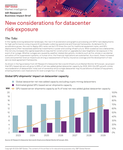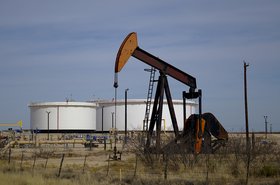Data centers are the backbone of global digitalization, powering the technologies that connect and transform our world. Our growing dependence on advanced capabilities, such as artificial intelligence (AI) and high-performance computing (HPC), is putting immense pressure on data centers to meet their soaring energy demands.
The International Energy Agency predicts that data centers’ global electricity consumption will more than double by 2026, from 460 terawatt-hours (TWh) to up to 1000 TWh. This sharp increase is driven largely by advanced AI systems, which require significantly more energy than traditional data processing tasks. For instance, a single AI query consumes about 2.9 watt-hours (Wh) – ten times more energy than a standard Google search.
However, data center operators face more than just the challenge of meeting rising energy demands. Sustainability is also a critical concern, as shown by new environmental reporting mandates. The European Commission, for instance, is due to implement a scheme requiring data centers to publish information on their energy performance and sustainability, including metrics on total energy consumption and waste heat reuse.
These dual priorities present a dilemma for data center operators: in a world where fossil-fueled energy predominates, how can data centers meet surging digital demands without compromising sustainability?
Integrating renewable energy
Data centers are not the root cause of energy supply tightness but a reflection of the broader need for increased investment in the energy system and development of renewable energy sources.
While some regions have made impressive strides in adopting clean energy, all are hampered by approval delays and grid congestion created by the fast growth of renewables. Even the new binding target set by the European Union’s revised Energy Directive of ensuring that at least 42.5 percent of energy comes from renewable sources falls short of addressing the rapidly growing energy demands of the digital age.
Acknowledging the challenge
The data center industry has been at the forefront of the push need for renewable energy and has long been the largest corporate investor in green power through power purchase agreements (PPAs) for renewable energy. These agreements not only ensure a steady supply of clean energy for data centers but also provide the funding needed to make large-scale renewable projects, like wind or solar farms, financially viable. Without this support, many of these projects would not be able to get off the ground.
Despite the industry’s continued focus on improving efficiency and investment in PPAs, issues remain. Firstly, the rapid demand growth for new technologies continues. Secondly, there is a mismatch between the generation and consumption of clean energy, highlighting the need to get renewable energy to where it is actually needed.
Data centers as grid partners
Due to this mismatch, an increase in demand for data centers’ outputs can lead to their power consumption exceeding the grid’s ability to deliver sufficient sustainable power. But, while they are the source of the challenge, they can also play a central role in boosting that stability. Doing so requires changing the perception of data centers as solely major consumers of energy and instead seeing them as ‘prosumers.’ This means calling on data centers to store, manage, and deliver energy to the grid too.
Through innovative approaches and technologies, achieving this title is becoming simpler for those in the industry. For instance, operators can now take advantage of demand response technology – such as Eaton’s EnergyAware. This capability builds on existing Uninterruptible Power Supply (UPS) systems, to enable data centers to act as an energy resource.
In other words, data centers with grid-interactive UPS technology will be able to act as energy reserves during peak demand, supporting the grid at critical times and integrating renewable resources, aligning operational demands with sustainability goals. At the same time, the UPS retains its primary function as a backup power source for the data center, prioritizing system continuity.
Tackling the power dilemma
The stakes are high. Failure to address the data center power dilemma effectively could have far-reaching consequences, not just for the data center industry but for the European economy which is highly dependent on digitalization.
Dynamic power solutions, such as grid-interactive UPS technologies, represent a clear step toward addressing the power dilemma. By enabling data centers to be both active consumers and producers of renewable energy, the industry can reduce strain on the grid, and advance Europe’s sustainability goals.
Ultimately, the data center industry has repeatedly committed itself to a zero-carbon future and is ready to cooperate with regulators, grid operators, energy technology providers, new energy investors, and local authorities to support a sustainable and digital future.




